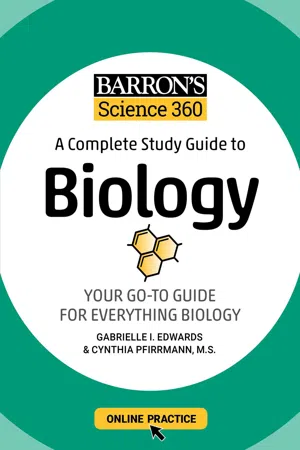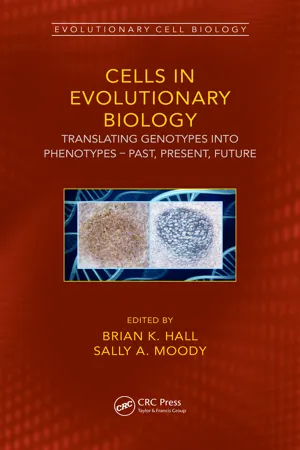Biological Sciences
Slime Mold
Slime molds are a group of organisms that display characteristics of both fungi and protozoa. They are single-celled organisms that can aggregate to form multicellular structures. Slime molds are known for their unique life cycle, which includes a mobile feeding stage and a stationary reproductive stage. They play important roles in decomposition and nutrient cycling in ecosystems.
Written by Perlego with AI-assistance
Related key terms
2 Key excerpts on "Slime Mold"
- Gabrielle I. Edwards, Cynthia Pfirrmann(Authors)
- 2021(Publication Date)
- Barrons Educational Services(Publisher)
Many other protist species are helpful to humans. Slime Molds help to keep an ecological balance by feeding on decayed plant and animal matter. These organisms also have a great deal of value as research specimens for investigators who are trying to ferret out the secrets of cell specialization and differentiation.Plankton is the mass of green that floats on rivers, lakes, and oceans. In reality, protists—microscopic “plant” life (phytoplankton) and microscopic “animal” life (zooplankton)—intermingle with mutual benefit in this floating mass, which serves as vital roles in the food chains of aquatic species.Review Exercises
WORD-STUDY CONNECTION
chytrid cilia colony conjugation contractile vacuole cyst diatom diatomaceous earth dinoflagellate fungus hypochytrid macronucleus micronucleus nematocyst oral groove paramylum pellicle plankton plasmodium protest protozoa pseudoplasmodium pseudopod pyrenoid body rhizoid Slime Mold social amoeba sorocarp sporangium stigma symbiosis trichocysts tsetse zooflagellate zooplankton zoospore zygoteSELF-TEST CONNECTIONPART A. Completion. Write in the word that correctly completes the statement.1 .One-celled protists that resemble animal cells are the _____.2 .Another name for a “self-feeder” is a (an) _____.3 .Amoebae move by means of false feet known as _____.4 .The usual mode of reproduction in protozoa is _____.5 .The relationship in which two organisms of different species live together and neither is harmed by the association is known as _____.6 .Digestion in Amoeba proteus takes place in the _____.7 .The Sporozoa are harmful to organisms of other species and are therefore classified as _____.8 .Anopheles is the genus name of a _____.9 .The organelle that expels excess water from the protist is the _____.10 .In Paramecium, the nucleus that controls metabolic activity is the _____.11 .The body of the paramecium is prevented from being totally flexible by the _____.12- eBook - ePub
Cells in Evolutionary Biology
Translating Genotypes into Phenotypes - Past, Present, Future
- Brian K. Hall, Sally A. Moody(Authors)
- 2018(Publication Date)
- CRC Press(Publisher)
Complex multicellular eukaryotic forms independently evolved at different moments in life’s history, most of them around approximately 800 Myr ago (Sebé-Pedrós et al. 2017). 4.1 INTRODUCTIONThe aim of this chapter is to ask what aspects pertaining to the evolutionary origin of multicellular life might be inferred from a survey of otherwise dissimilar protists that display one or both of two features: a unicellular-to-multicellular transition as part of their normal life cycle, or membership of a closely related group that contains both unicellular and multicellular members. Accordingly, we highlight aspects of multicellular development in three different “supergroups” of eukaryote protists: Dictyostelid or cellular Slime Molds (CSMs) (supergroup Amoebozoa, Mycetozoa; Section 4.2 ); Choanoflagellates, Filastareans, and Icthyosporeans (Opisthokonta, unicellular Holozoa; Section 4.3 ); and Volvocine green algae (Archaeplastida, Chlorophyceae; Section 4.4 ); their last common ancestor is believed to lie at the very root of the evolutionary tree of eukaryotes (Burki 2014). In the first two, multicellularity is achieved by the aggregation of single cells, in the third, by the products of cell division staying together. A striking difference from metazoan multicellularity is that none of the life cycles contain an obligatory sexual phase. Because not many species have been studied in detail, the information to be presented comes from a very small number of (what one hopes are) representative cases. As it happens, the most interesting evolutionary implications pertain to discordances between studied features, which means that they are likely to be robust. A brief summary concludes each of the three sections that follow. A general discussion comes at the end of this chapter.4.2 EVOLUTION OF MULTICELLULARITY VIA AGGREGATION: THE CELLULAR Slime MoldS This section is restricted to the CSMs and some other amoeboid organisms that display facultative multicellularity with similar life cycles. It is organized around four themes:
Learn about this page
Index pages curate the most relevant extracts from our library of academic textbooks. They’ve been created using an in-house natural language model (NLM), each adding context and meaning to key research topics.

